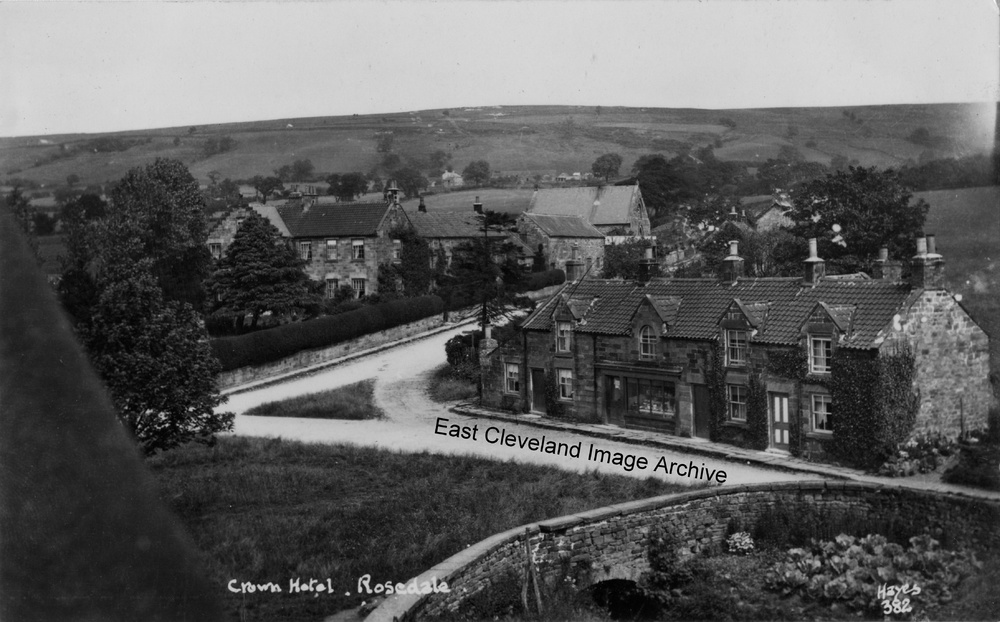
A William Hayes postcard view of the Crown Hotel, Rosedale.
Image courtesy of Jean Carass.
|
|
||
 A William Hayes postcard view of the Crown Hotel, Rosedale. Image courtesy of Jean Carass. 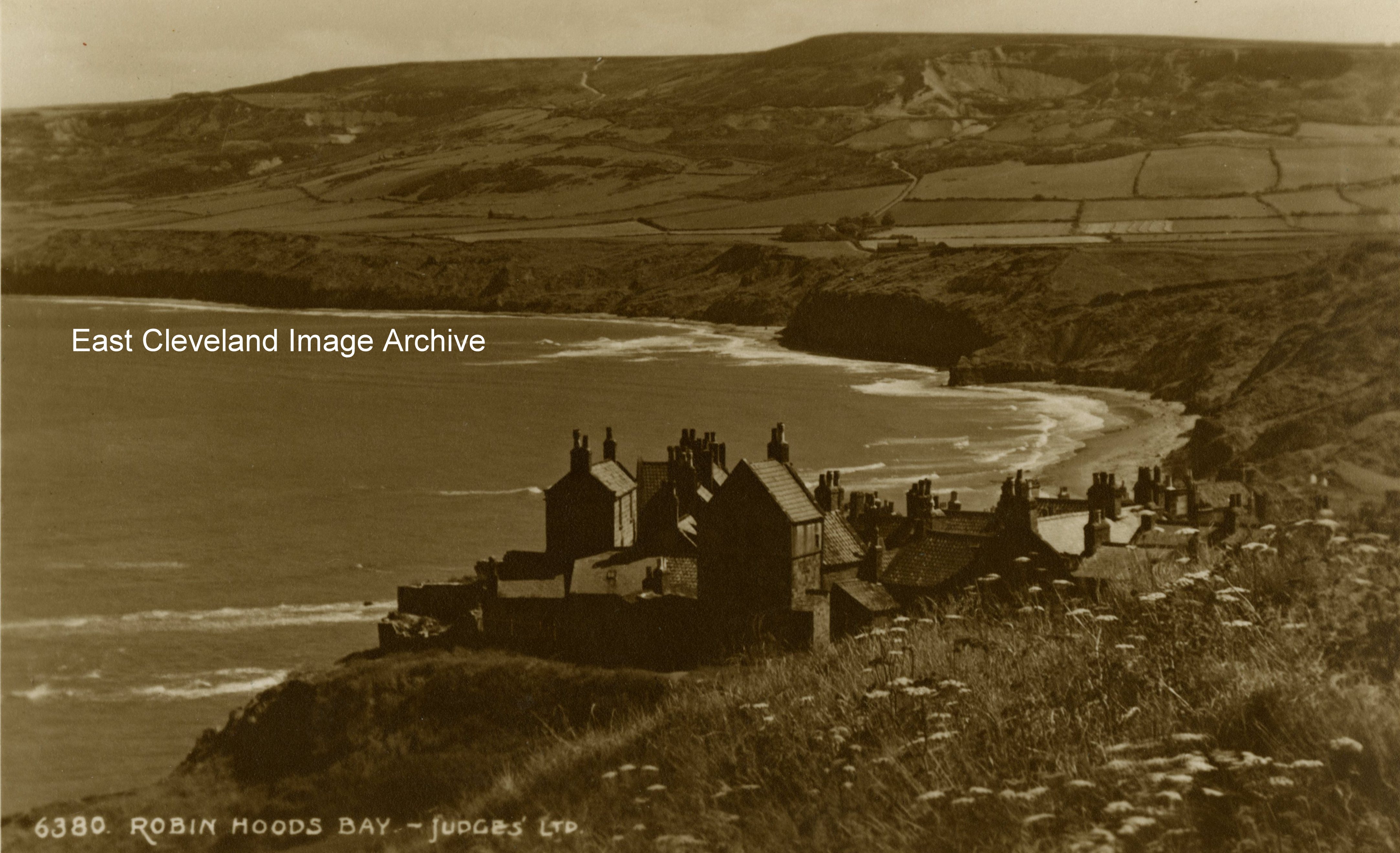 A further Judges’ postcard view from Robin Hood’s Bay towards the former Peak Alum Works at Ravenscar. Image courtesy of John G. Hannah. 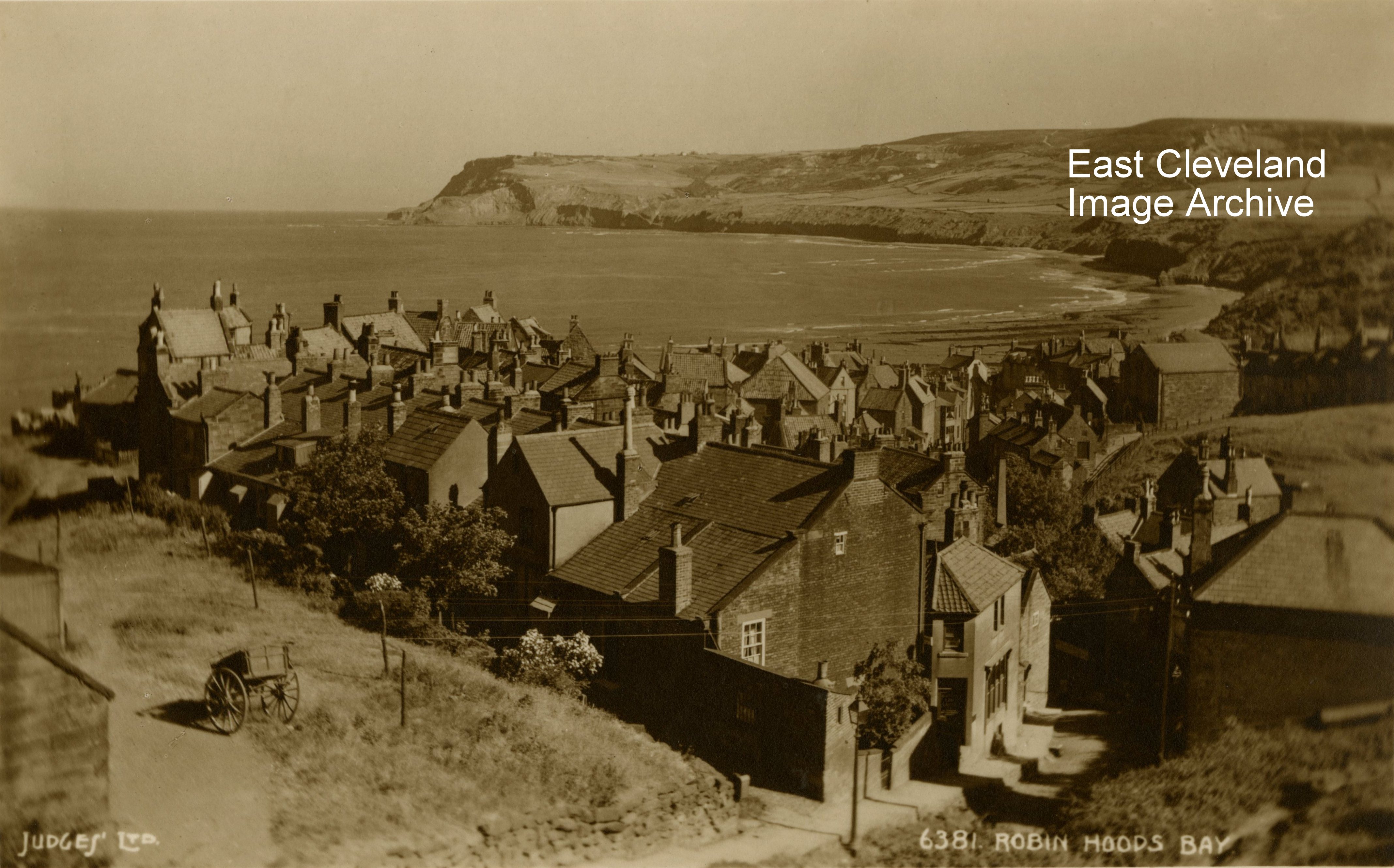 A Judges’ postcard view of Robin Hood’s Bay, we like the cart parked in what is now a parking area behind the present day ‘Candy’s Café & Tearoom’. The view is still the same, magnificent! Image courtesy of John G. Hannah. 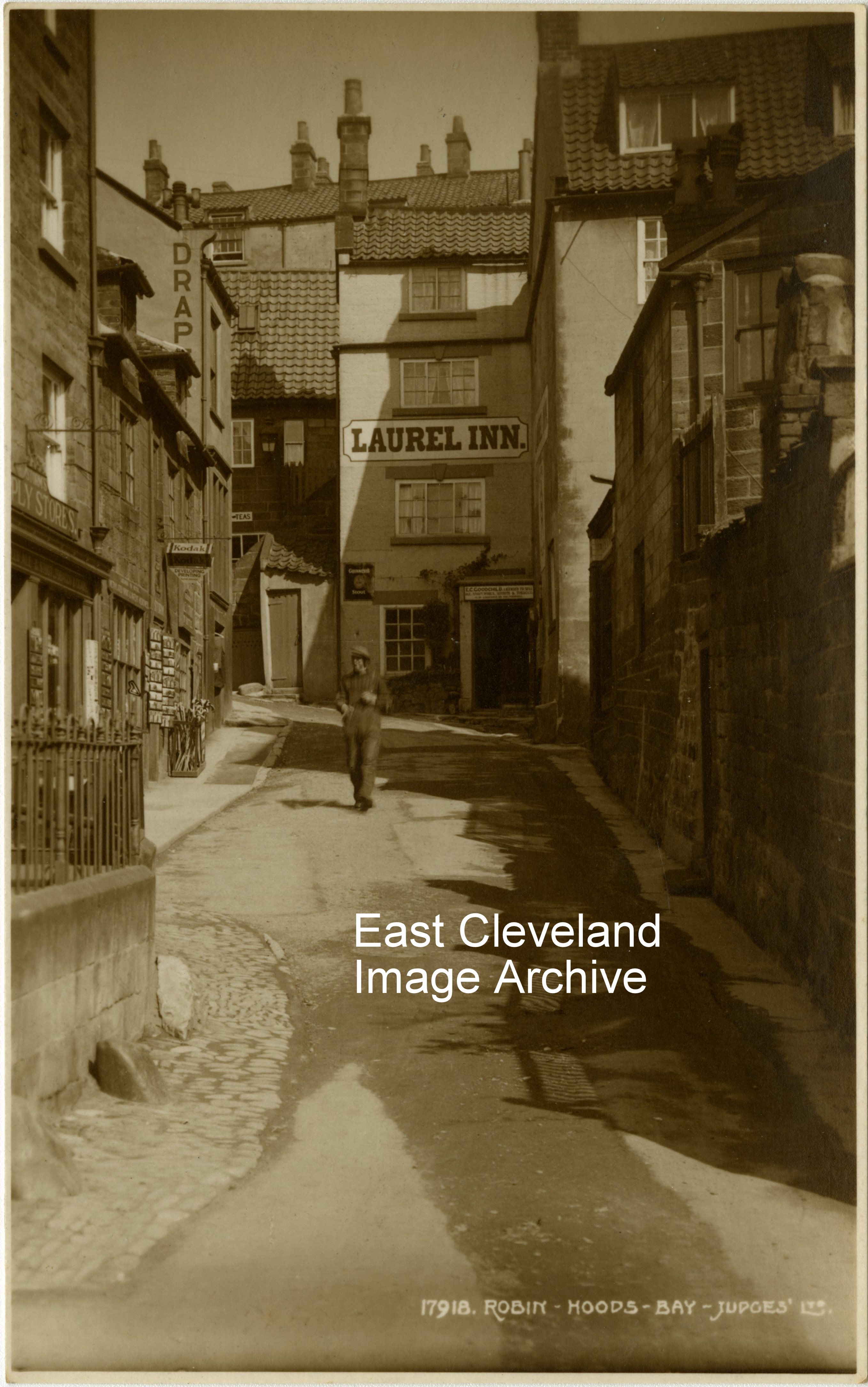 A Judges’ postcard view of the Laurel Inn; is the fisherman returning from the Inn or happily on his way to work his boat? Image courtesy of John G. Hannah. 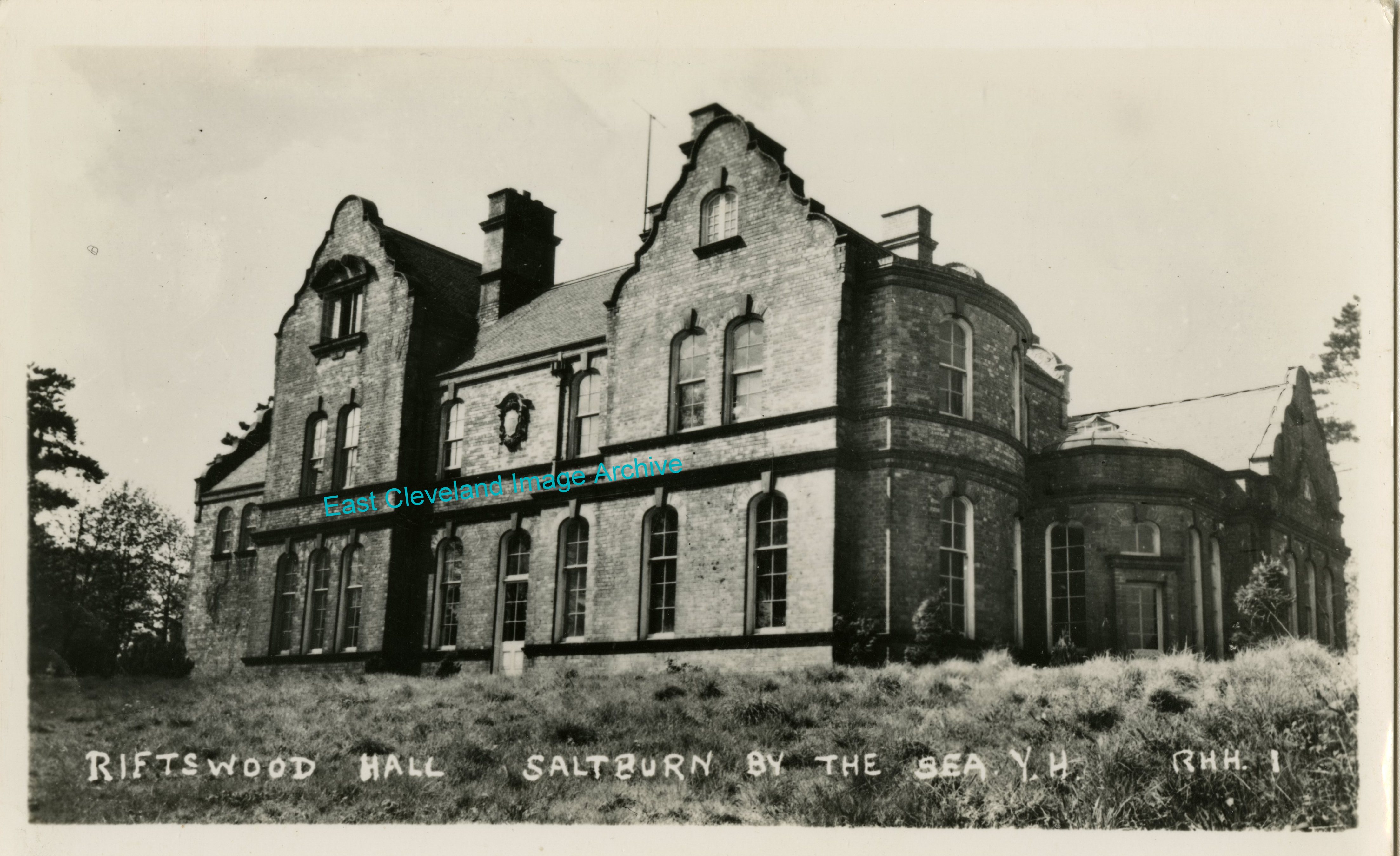 This postcard view of the Youth Hostel at Saltburn is unused so any date would have to be approximate; like all Youth Hostels this would be one of a series of postcards produced to promote the Hostel. Christine advises: “I have the exact photo from 1969 when I went with my primary school would love to see any photographs from my visit.” Image courtesy of John G. Hannah, thanks to Christine for the update. 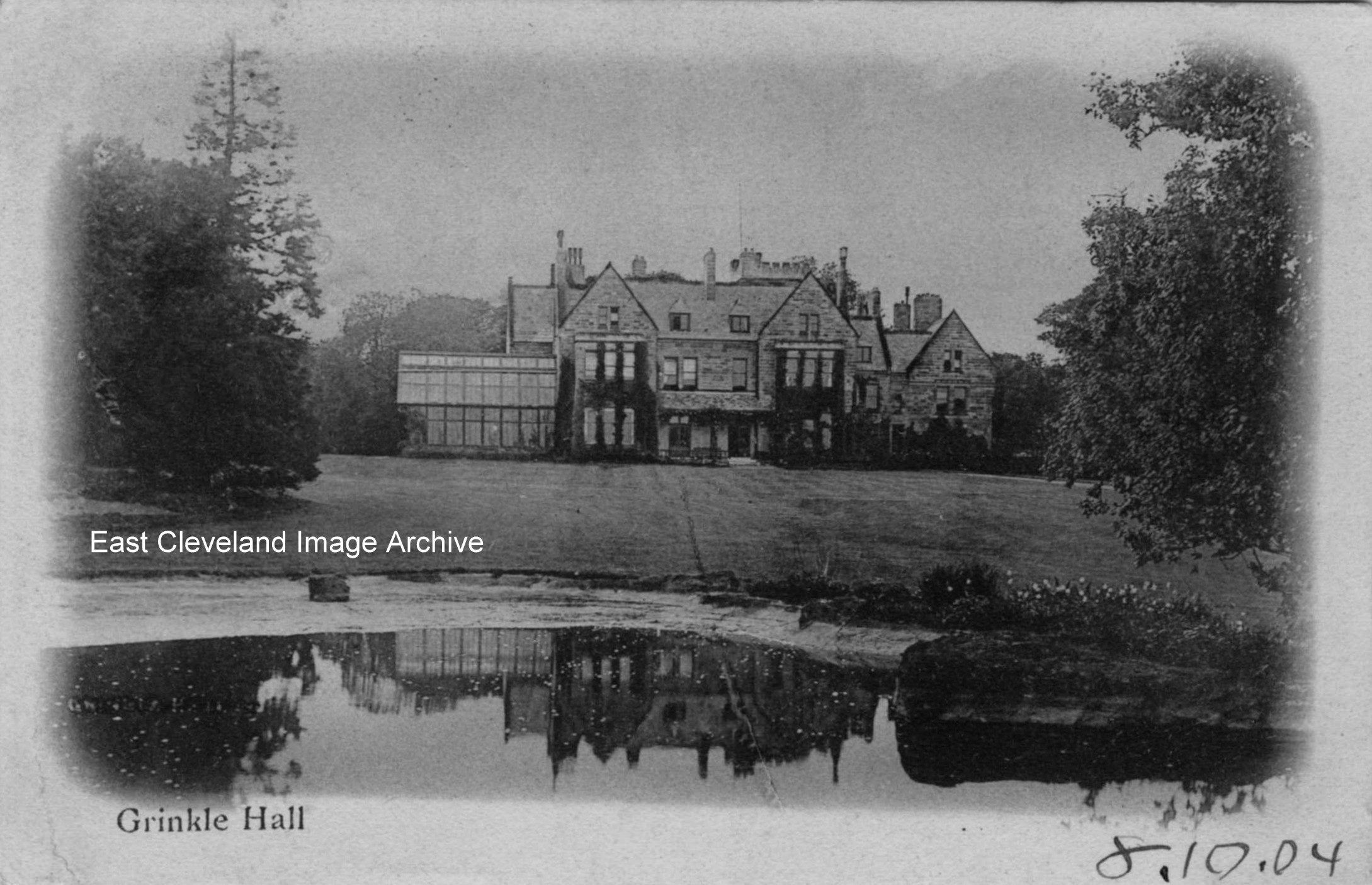 Grinkle Hall (Grinkle Park hotel as it is today) is the title of this postcard image, dating from 1904. Bearing a postmark to that, as well as an annotation visible in the lower right. There is a similar view on site, but is a tinted version of the same view. Image courtesy of John G. Hannah. 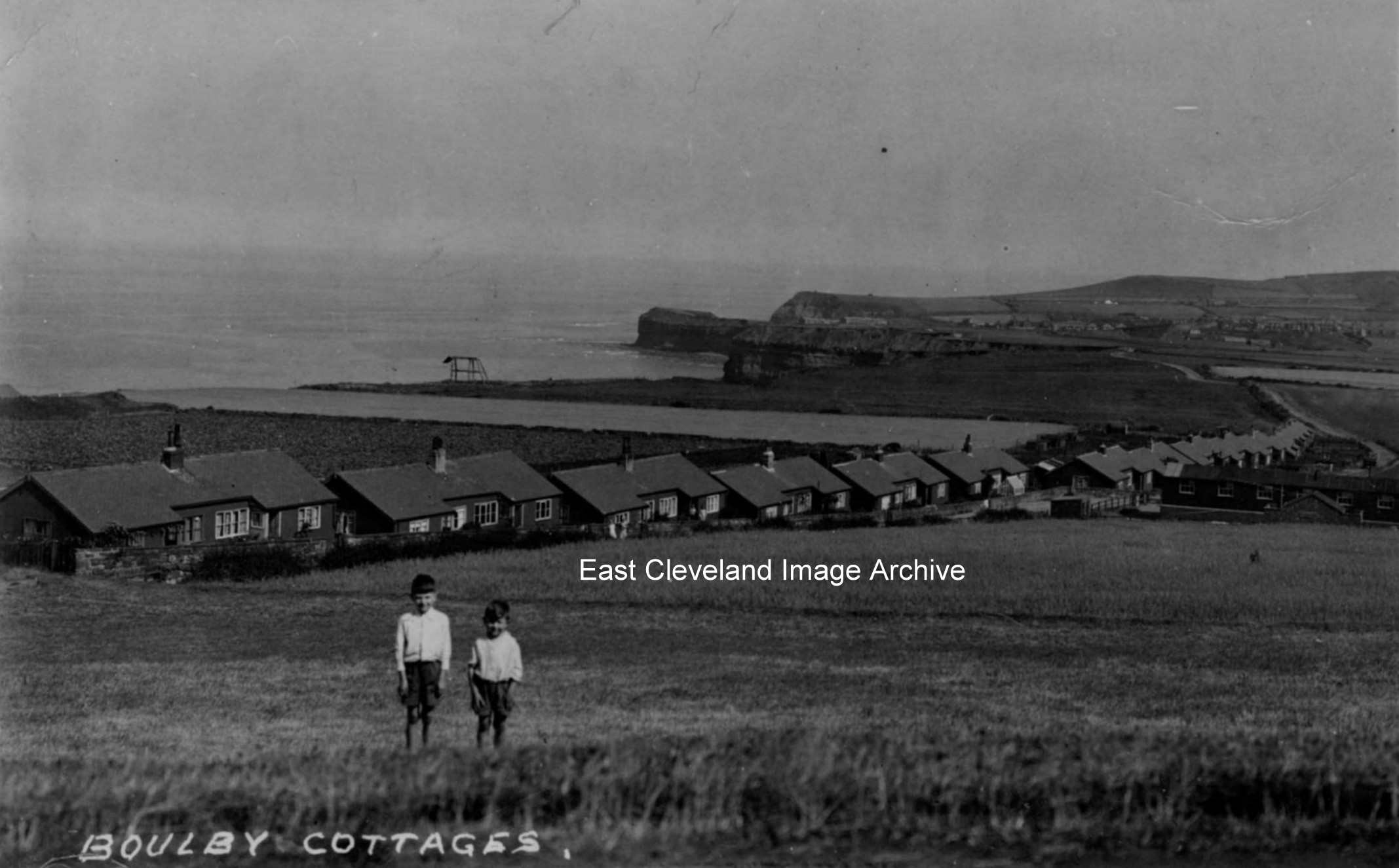 Two young boys pose to have their photograph taken in front of Boulby cottages or ’Tin City’ as it was locally known. Housing workers at the then Boulby ironstone mine, now the site of Boulby potash mine. The two lads have now been identified as Lance Easton (on the left) and Harry Easton (on the right). Image courtesy of Ray Conn, many thanks to Craig Bullock for that update. 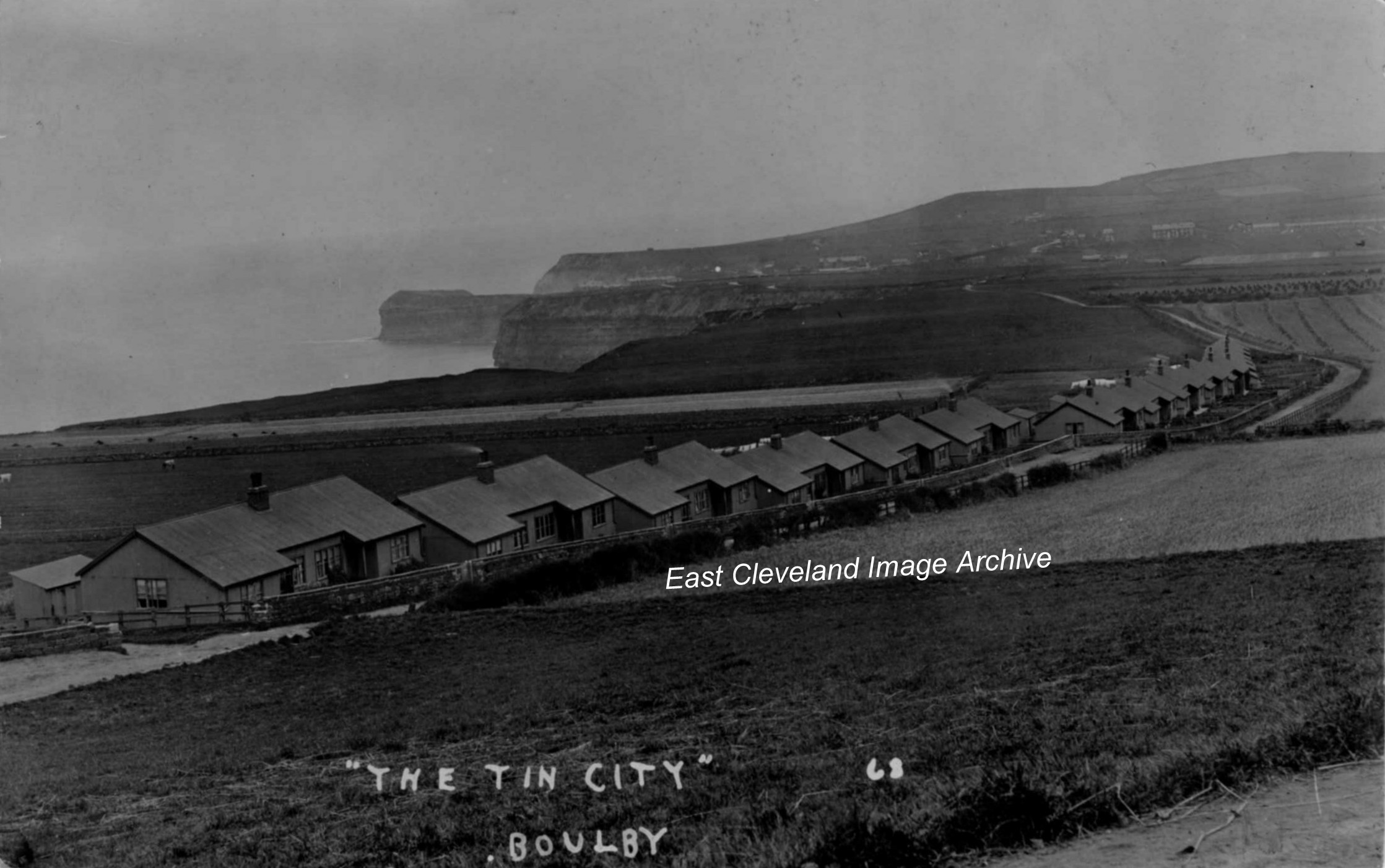 ”Tin City”, Boulby Mines, looking towards Cowbar, about 1920” – is the title given to a copy of this image as featured in the Book ”Boulby Ironstone Mine” by Simon Chapman. Simon advised that the Skinningrove Iron Company in 1906 ”decided to proceed with the erection of 40 cottages at Boulby, at a cost of approximately £100 each, to house some of the workforce”, although an out of the way place it was very convenient for workers at the ironstone mine! The entire row of 38 cottages were subsequently sold at auction (conducted by Mr T. S. Petch) in February 1939 in lots of two, and brought £3.10s each. As they were sold under a clearance order, purchasers were responsible for the removal from the site. Residents having been ‘removed to to the new council estate at Loftus’. Mary Bielby has told us: ”My grandfather was a joiner who fitted the wooden linings in the tin houses”. Derick Pearson tells us: “Sarah Sheridan (ex-church minister of Loftus) who died at the age of 105 recently; she was born in Tin City. She many years later moved to Loftus and purchased the tin cottage she lived in with her parents and it had it rebuilt at East Crescent Loftus as a Pentecostal church, at the top of East Crescent, beyond the Hird’s joinery buildings.” The building was demolished some years ago, the Pentecostal congregation now use the church building on Deepdale Road. Antony Mugford comments: “I have discovered a distant relative who lived in Boulby Easington in 1911 at No 8 Iron Cottages. Where would these have been?” Image courtesy of Ray Conn, many thanks to Simon for information relevant to this now vanished community and dating the original creation of the ”Tin City of Boulby”, also to Mary Bielby, Derick Pearson and Antony Mugford for updates. Supplementary information about the disposal of the cottages courtesy of a Northern Despatch cutting dated 17th February, 1939. 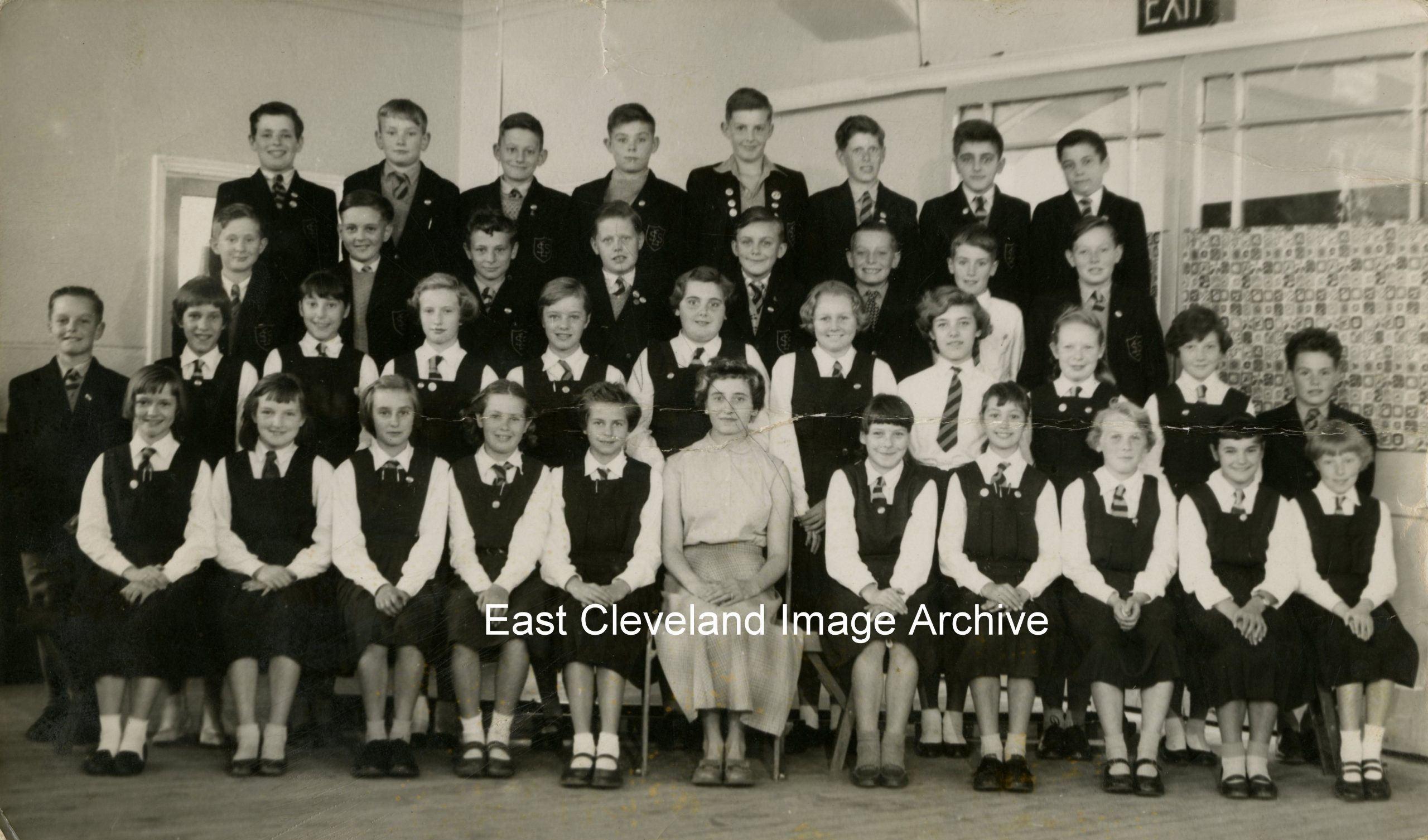 First year at Stanghow Lane in 1959; assistance with names and date, please? 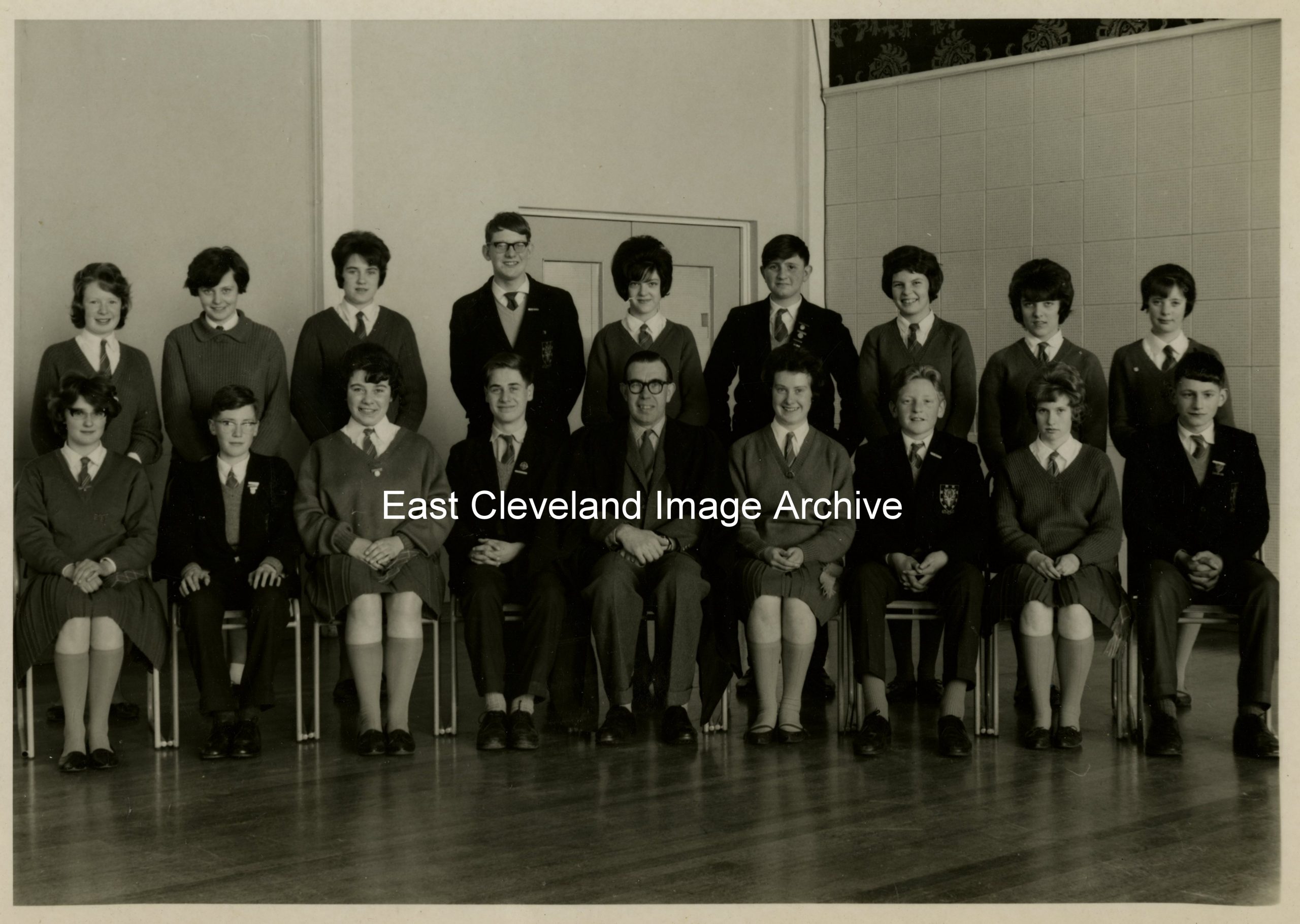 Mr William Bowman (Headmaster), with the Head Boy (Tony Temple), Head Girl (June Lightburn) and the Prefects in 1963. |
||
Recent Comments